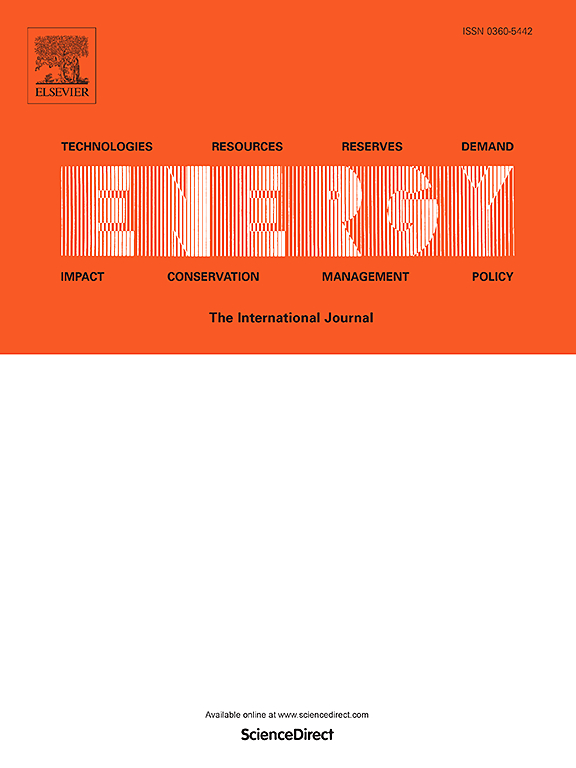Discharging via the low-pressure section of the thermal power plant: a new integrated Carnot battery concept and the performance evaluation
IF 9
1区 工程技术
Q1 ENERGY & FUELS
引用次数: 0
Abstract
The inferior discharging performance severely limits the efficiency enhancement of the Carnot batteries using heat pump and organic Rankine cycle (HP-ORC). This work proposed a new Carnot battery concept thermally assisted by thermal power plant, which discharges through the low-pressure section of steam turbine instead of ORC. Its energy-conversion characteristics and operational performance are evaluated based on the typical coal-fired power plant (CFPP) and Carnot battery cases. As the results show: (1) The round-trip efficiency of the proposed system (82.30–133.32%) is significantly higher than the HP-ORC (47.27–64.27%) within similar temperature ranges, attributed to the higher discharge efficiency (19.40%). Thereby, carbon reduction of CFPP and energy storage density are also improved. (2) The energy-level promotion of the discharging working fluids is the thermodynamic reason for the better discharging performance, affected by the redistribution of steam fluxes in turbine and the pressure ratio variation of each turbine-stage group. (3) The key constraints are identified to determine the operating scenarios for variable boundary conditions. (4) Improving the hot-tank temperature can almost promote all the performance indicators, different from the dilemma of HP-ORC between efficiency and other indicators; besides, the proposed concept is more suitable for the power plants not capable of extremely-low-load operation.
火电厂低压段放电:一种新的集成卡诺电池概念及性能评价
由于卡诺电池的放电性能较差,严重限制了热泵和有机朗肯循环(HP-ORC)对电池效率的提高。本文提出了一种新的热电厂辅助卡诺电池的概念,通过汽轮机低压段代替ORC进行排放。以典型燃煤电厂和卡诺电池为例,对其能量转换特性和运行性能进行了评价。结果表明:(1)在相似温度范围内,该系统的往返效率(82.30-133.32%)显著高于HP-ORC(47.27-64.27%),这主要归功于其更高的放电效率(19.40%)。从而提高了CFPP的减碳率和储能密度。(2)排汽工质的能级提升是排汽性能较好的热力学原因,受汽轮机内汽通量的重新分配和各级组压比变化的影响。(3)识别关键约束条件,确定可变边界条件下的运行场景。(4)提高热槽温度几乎可以促进所有的性能指标,不同于HP-ORC在效率与其他指标之间的两难;此外,所提出的概念更适用于不具备极低负荷运行能力的电厂。
本文章由计算机程序翻译,如有差异,请以英文原文为准。
求助全文
约1分钟内获得全文
求助全文
来源期刊

Energy
工程技术-能源与燃料
CiteScore
15.30
自引率
14.40%
发文量
0
审稿时长
14.2 weeks
期刊介绍:
Energy is a multidisciplinary, international journal that publishes research and analysis in the field of energy engineering. Our aim is to become a leading peer-reviewed platform and a trusted source of information for energy-related topics.
The journal covers a range of areas including mechanical engineering, thermal sciences, and energy analysis. We are particularly interested in research on energy modelling, prediction, integrated energy systems, planning, and management.
Additionally, we welcome papers on energy conservation, efficiency, biomass and bioenergy, renewable energy, electricity supply and demand, energy storage, buildings, and economic and policy issues. These topics should align with our broader multidisciplinary focus.
 求助内容:
求助内容: 应助结果提醒方式:
应助结果提醒方式:


